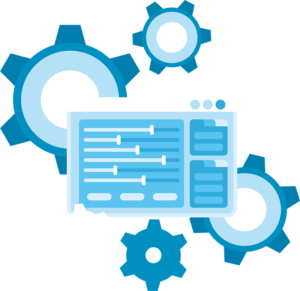Introduction:
In our increasingly interconnected world, cybersecurity has become a critical concern for individuals, businesses, and governments. However, numerous misconceptions surround the field of cybersecurity, which can lead to ineffective practices and increased vulnerability to cyber threats. In this article, we will debunk the top 10 misconceptions in cybersecurity, shedding light on the realities and providing guidance for better security practices. By dispelling these myths, we hope to promote a more accurate understanding of cybersecurity and help individuals and organizations strengthen their defenses.

Misconception: Cybersecurity is Solely an IT Department Responsibility
One of the most common misconceptions is that cybersecurity is solely the responsibility of the IT department. In reality, cybersecurity is a collective effort that requires participation from all individuals within an organization. Employees at all levels should be educated about security best practices, be vigilant against potential threats, and adhere to established security protocols.
Misconception: Cyberattacks Only Happen to Large Organizations
While high-profile cyberattacks against large organizations often make headlines, small and medium-sized businesses are also vulnerable targets. Cybercriminals often target smaller organizations with limited security measures, making them easier prey. Every organization, regardless of size, should prioritize cybersecurity to protect sensitive data and prevent breaches.
Misconception: Anti-virus Software Provides Comprehensive Protection
Anti-virus software is an essential component of a robust security strategy, but it is not a panacea. Many believe that having anti-virus software installed is sufficient to protect against all cyber threats. However, cybercriminals continually evolve their tactics, and new threats may bypass traditional anti-virus defenses. A multi-layered security approach, including regular updates, patch management, and employee awareness, is crucial.
Misconception: Strong Passwords Guarantee Security
While using strong and unique passwords is important, it is not enough to ensure complete security. Many people believe that using complex passwords guarantees protection. However, passwords can still be compromised through methods such as phishing attacks, keyloggers, or data breaches. Implementing multi-factor authentication and regularly updating passwords is crucial to enhance security.
Misconception: Macs are Immune to Malware and Cyberattacks
There is a common belief that Mac computers are immune to malware and cyberattacks, unlike their Windows counterparts. While it is true that Macs have historically faced fewer attacks, their popularity has grown, making them increasingly attractive targets for cybercriminals. Mac users must remain vigilant, keep their systems updated, and use security software to mitigate risks.
Misconception: Public Wi-Fi Networks are Secure
Using public Wi-Fi networks is convenient, but they are often insecure and prone to attacks. Many people mistakenly believe that connecting to public Wi-Fi is safe, assuming that encryption protects their data. However, attackers can intercept sensitive information transmitted over public networks. Using a virtual private network (VPN) and avoiding sensitive activities on public Wi-Fi networks are crucial for maintaining security.
Misconception: Cybersecurity is Only About Technology
Cybersecurity is not solely a technological issue; it also involves human behavior and processes. Many organizations focus solely on implementing security technologies without addressing employee awareness, training, and incident response plans. Effective cybersecurity requires a holistic approach that combines technology, processes, and a security-conscious culture.
Misconception: Cybersecurity is a One-Time Investment
Some organizations believe that investing in cybersecurity solutions once is sufficient to protect their systems indefinitely. However, cybersecurity is an ongoing process that requires regular updates, patch management, and monitoring. Threats and vulnerabilities evolve, and security measures must be regularly reviewed and updated to adapt to changing circumstances. While compliance with industry regulations and standards is essential, it does not guarantee comprehensive security. Compliance focuses on meeting specific requirements, whereas cybersecurity encompasses a broader and proactive approach. Organizations should go beyond compliance and adopt best practices, conduct risk assessments, and implement security measures appropriate to their specific needs.
Misconception: Cybersecurity is an Expense, Not an Investment
Many organizations view cybersecurity as an expense rather than an investment. This mindset leads to insufficient budget allocations and inadequate security measures. However, the cost of a cyber incident, including data breaches, reputation damage, and legal consequences, far outweighs the investment required for robust cybersecurity measures. Organizations should consider cybersecurity as a crucial investment in protecting their assets and ensuring business continuity.
Conclusion:
By debunking these top 10 misconceptions in cybersecurity, we have highlighted the importance of adopting a proactive and holistic approach to security. Cybersecurity is not solely the responsibility of the IT department, nor is it limited to technology alone. It requires collective effort, employee awareness, and a comprehensive strategy that addresses human behavior, processes, and technology. By dispelling these misconceptions, individuals and organizations can take proactive steps to strengthen their security posture and mitigate the evolving cyber threats of today's digital landscape.






